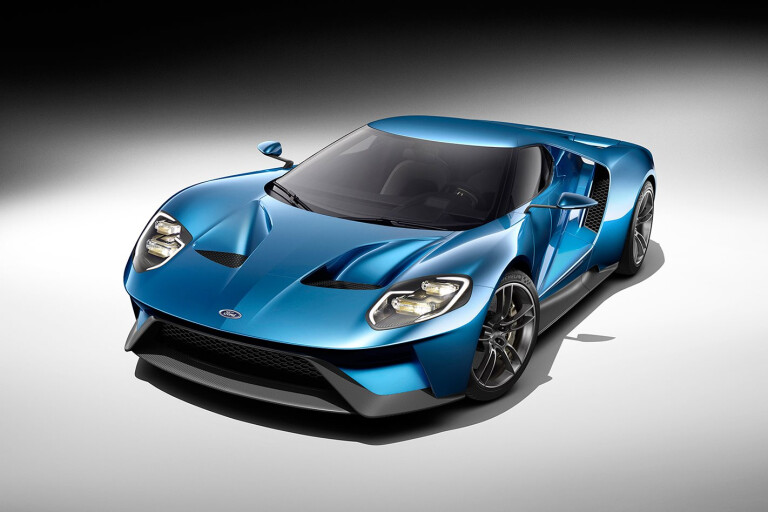
Ford has kicked off what’s set to be a strong year for Blue Oval performance car releases (Focus RS, Shelby GT350 and GT350R Mustangs, et al) by unveiling a revamp of its flagship muscle-cum-supercar, the GT.
Due for production in 2016 to mark the 50th anniversary of the original GT’s historic 24 Hours of Le Mans whitewash of 1966, its maker claims the nameplate revival is all-new affair.
The jewel of the Ford Performance fleet will serve as a halo car to showcase the Blue Oval’s engineering talents and to spruik its EcoBoost brand through high-performance powertrain technologies.
Gone is the old-school supercharged V8 of the old ‘new’ GT, replaced by a ‘next-generation’ twin-turbocharged 3.5-litre V6 featuring architecture derived from Ford’s IMSA Daytona Prototype racing heritage.
Its maker claims the most-powerful unit yet to wear an EcoBoost badge features a dual port-and-direct fuel injection system and is good for “more than 600 horsepower,” or around 450kW plus.
Mounted mid-rear-ship, the engine plies its formidable energies through a seven-speed dual-clutch transaxle assembly rather than the convention H-gated manual found in the old GT.
Designers have also foregone the homogenized retro-infused styling of its forebear, introducing a more radical and aero-aggressive exterior treatment that aligns the American hypercar’s appearance more closely to that of Italian-bred exotics.
Most striking is the cocooning, almost jet fighter-like glasshouse, while the old GT’s classic gullwing door arrangement has been replaced by a more practical yet no-less-dramatic up-and-forward-rotating design.
While promising “one of the best power-to-weight ratios of any production car,” the new GT is largely constructed with a combination of aluminum, which is used for both front and rear subframes, and carbonfibre, which makes up the passenger cell and structural panel work.
Furthering the technology showcase includes an active aerodynamics enhancements (such as the auto-adjustable rear wing) and pushrod-style inboard-damper suspension featuring a suite of active trickery such as active ride height adjustment.
Huge carbon-ceramic brakes framed by 20-inch wheels shod with Michelin Pilot Sport Cup 2 rubber are featured on the Detroit show car.
The minimalist cabin, with stalkless steering column and paddleshift F1-style steering wheel, nods to contemporary hypercar tastes, the absence of electrified power boosting or energy recuperation systems pegs the new GT, to a degree, towards lovers of old-school supercar simplicity.
Due in US showrooms late 2016, the likelihood that Ford’s new ultimate performance weapon making it Down Under in left-hand drive form thereafter is highly questionable.

COMMENTS